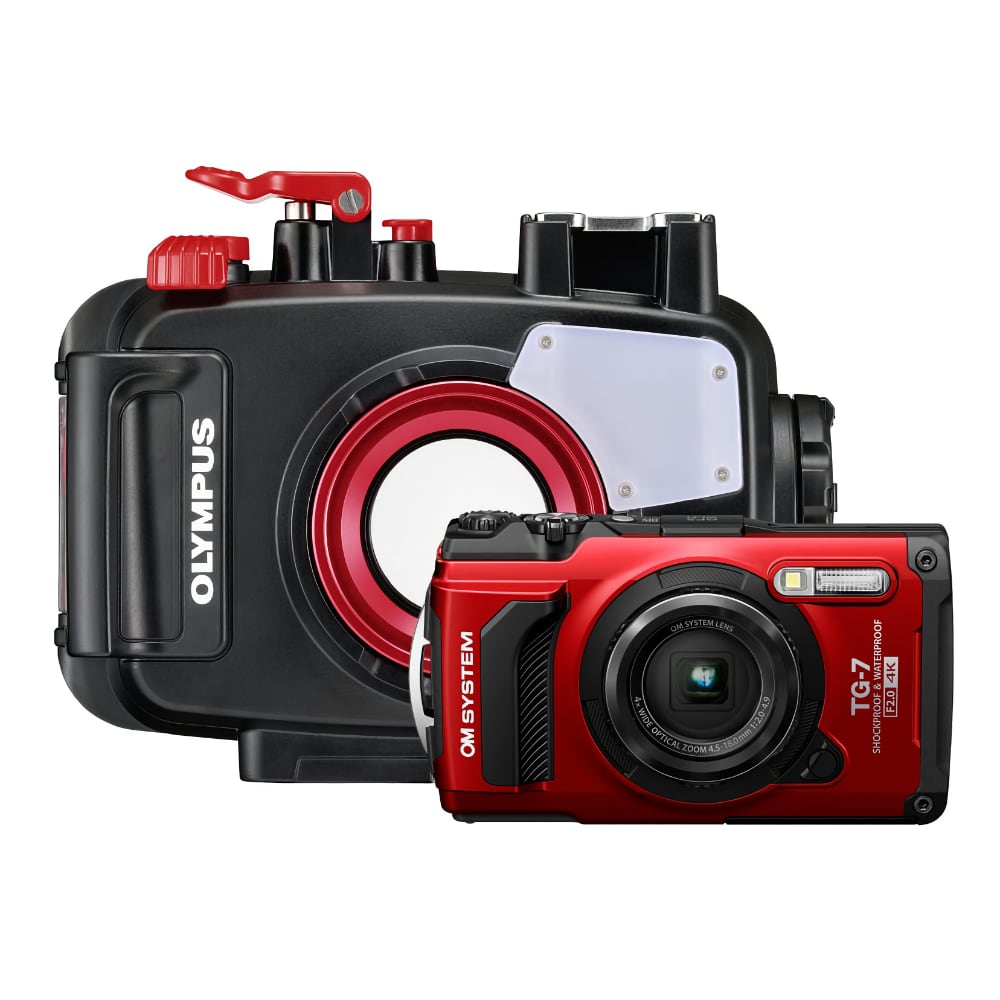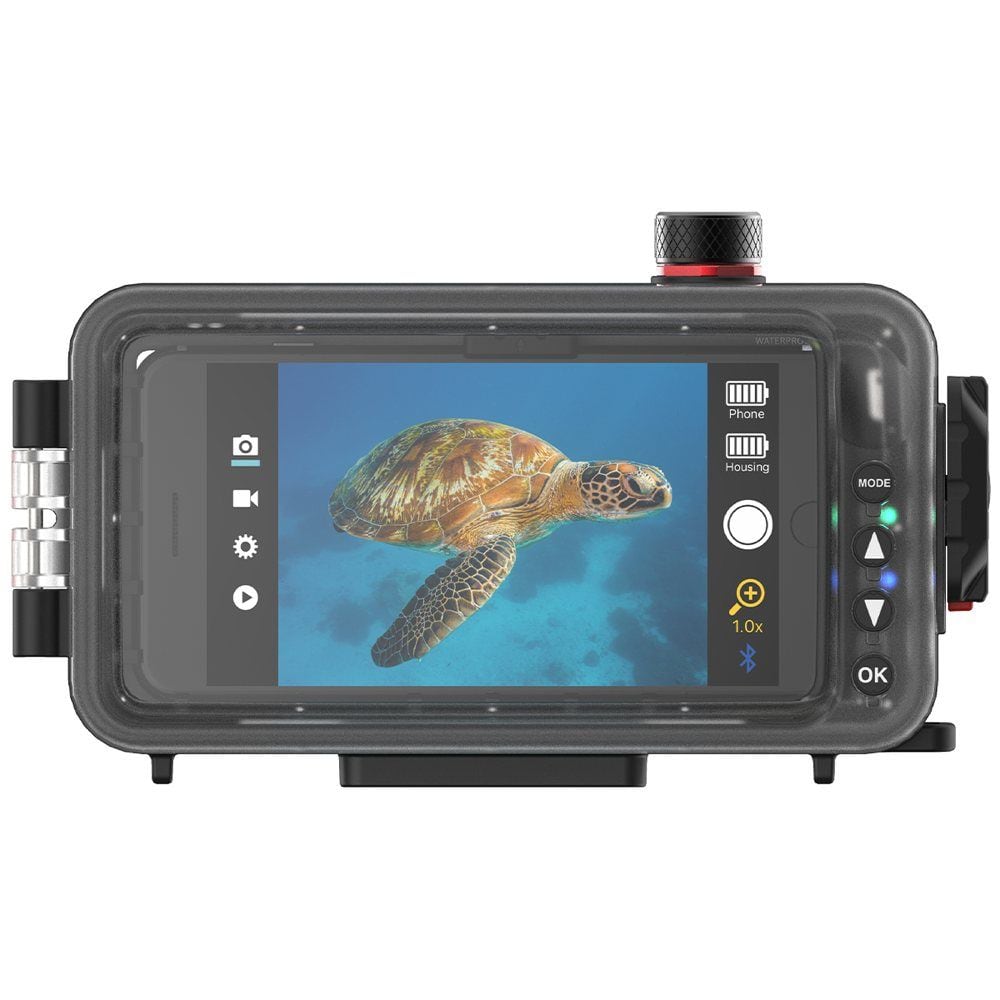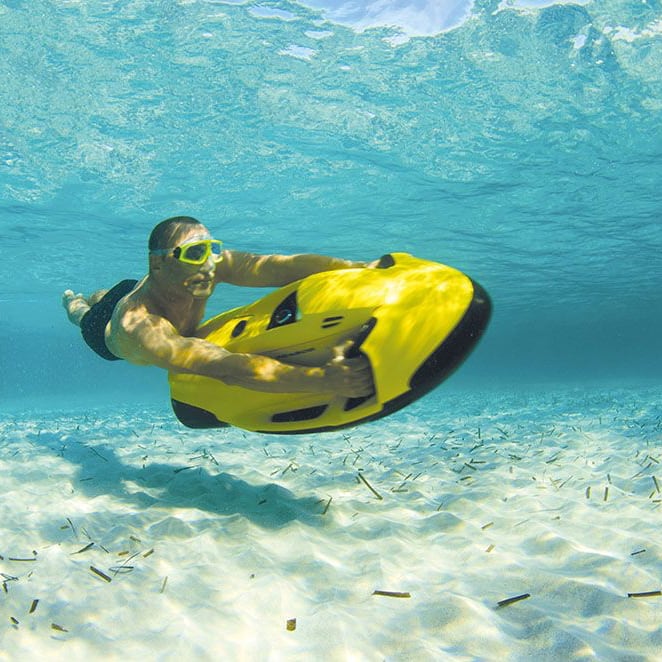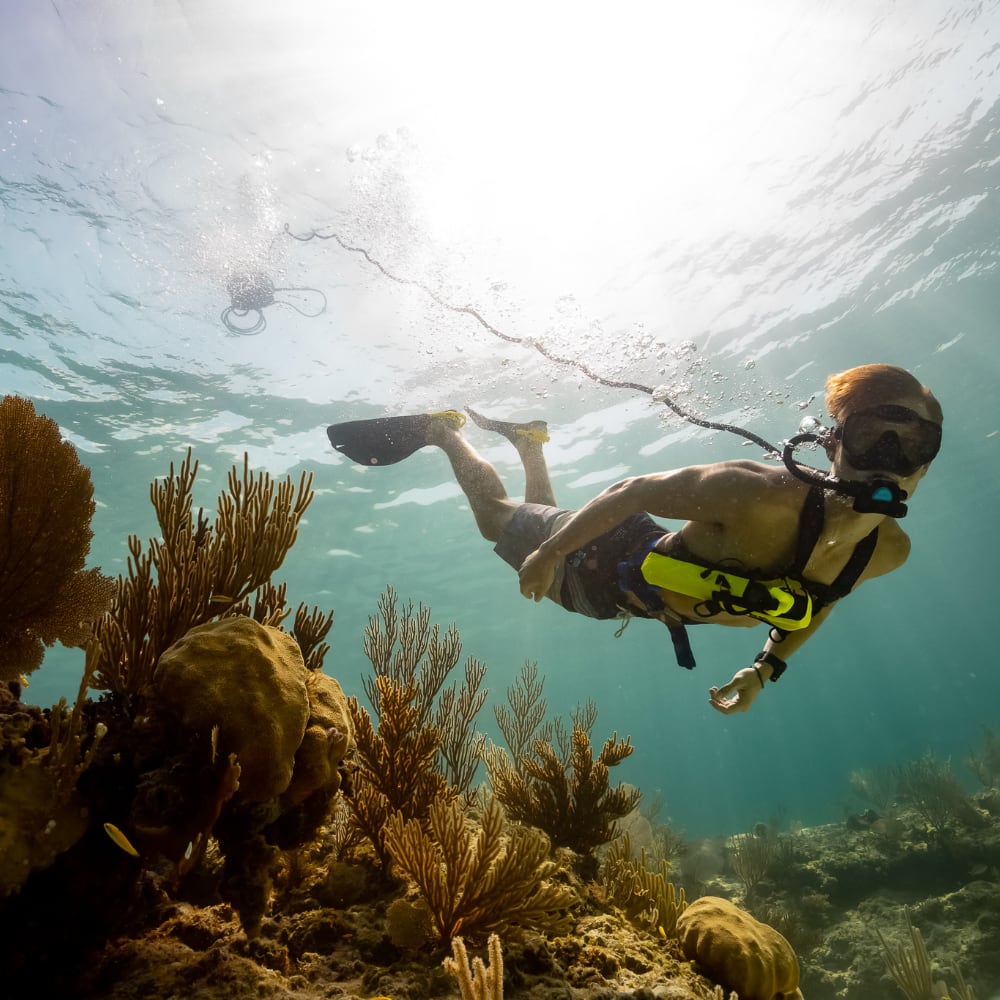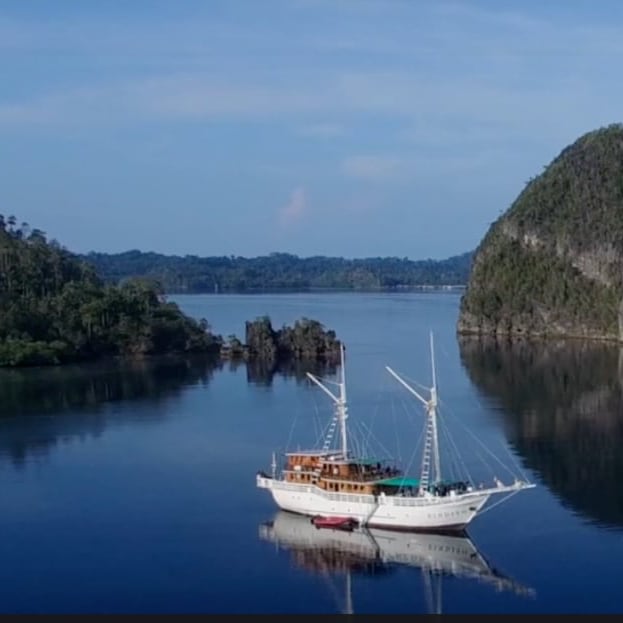Rapid Bay Jetty - Leafy Seadragon Heaven
When I first came to Australia, almost 20 years ago, my then-boyfriend (now husband and trusted dive buddy) had a poster hanging in the bathroom depicting what I thought was a fantasy creature.

Soon enough I learned that the image was actually of a real existing animal and endemic to Australian temperate waters at that.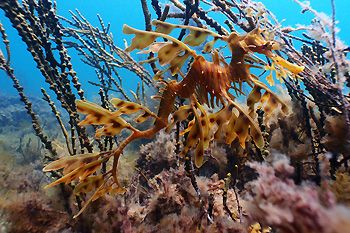 The Leafy Seadragon (Phycodurus eques) belongs to the same family of the seahorse, pipe horse, pipefish and the Weedy Seadragon. The Leafy Seadragon can only be found in the southern waters of Australia between Kangaroo Island, South Australia in the East to Jurien Bay, Western Australia in the west. They can grow up to 24 cm long and just like their close relatives the male looks after their eggs. The male carries the fertilised eggs attached to its long tail for about 9 weeks. Once the little seadragons appear, they immediately lead an independent life.
The Leafy Seadragon (Phycodurus eques) belongs to the same family of the seahorse, pipe horse, pipefish and the Weedy Seadragon. The Leafy Seadragon can only be found in the southern waters of Australia between Kangaroo Island, South Australia in the East to Jurien Bay, Western Australia in the west. They can grow up to 24 cm long and just like their close relatives the male looks after their eggs. The male carries the fertilised eggs attached to its long tail for about 9 weeks. Once the little seadragons appear, they immediately lead an independent life.
Only a small percentage of the young Leafy Seadragons survives into adulthood and with natural and human-made threats imminent even then their lives are constantly in limbo making it a real miracle they are even still there……
Unlike the seahorse Seadragons cannot curl their tail to hold on when the ocean gets rough and with limited swimming abilities they depend on extreme camouflage to keep themselves safe.
Despite its relatively large distribution area there are only a few places where you can reliably see those extraordinary creatures. One of those places is Rapid Bay Jetty, just 95 km south of Adelaide.
Nate from NB SCUBA was going to show us some Leafy Seadragons and we met at the carpark right at the jetty.
The original jetty was built by BHP in the 1940s and reached 470 meters in length. After commercial use stopped, the jetty was no longer maintained and fell into disarray. A large storm in 2004 made the jetty unsafe and access to the general public was closed for safety reasons.
The current and accessible Rapid Bay Jetty was rebuilt about 50 meters next to the original jetty. The cost was close to 4 million Australian Dollars and it was reopened to the public in 2010.
This new jetty is only 240 meters long and at the end some wide stairs lead to an excellent divers platform just below the water's surface and it is a very easy entry - you basically just walk down the steps and swim off. 
There were plenty of people fishing from the new jetty, but I must say that I wasn't sure what they were after. Maybe I was there at the wrong time of day, but the fact that they got excited about catching a juvenile goatfish made me wonder if they knew what they were doing!
Fortunately, the original jetty structure is still in place and it is a great habitat for all kinds of marine life. This is where the actual diving is the most interesting and where the Leafy Seadragon tend to hang out...
After a short swim across we descended. Immediately we were buzzed by a largish cuttlefish. The pylons of the old structure were covered with sessile critters and would make an interesting dive in itself if we hadn't set our goal to find as many Leafy Seadragons as we could. However, it was pretty much impossible to ignore the other life completely and in between Seadragons there was plenty to look at.
The pylons of the old structure were covered with sessile critters and would make an interesting dive in itself if we hadn't set our goal to find as many Leafy Seadragons as we could. However, it was pretty much impossible to ignore the other life completely and in between Seadragons there was plenty to look at.
A night dive here would be awesome! Apparently hand fish can be found here. We saw lots of filefish, leatherjackets, Zebrafish, Morwongs, Boarfish and Old WIfes. I spotted the occasional Ornate Cowfish and a few Porcupine Pufferfish as well.
I loved the fact we were only in shallow water as the light was great and it also meant we could stay under for as long as we wanted to since air consumption and bottom time were not even nearly limiting.
I thought that by knowing that the Leafy Seadragons were there it would be easy to spot them. However, it was great to have Nate pointing them out, while I did my very best to capture each individual on camera without seemingly distressing them too much.
The last two we - or I should say Nate - found seemed to be galloping over the seaweeds and posing this way and the other. I felt so privileged to be there!
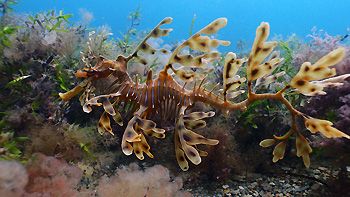
Nate was a legend and managed to find seven (!!) different animals. On the search we also saw plenty of squid eggs, carefully put in amongst the seaweeds. I could faintly see some eyes staring back at me from the soft, opaque eggs. As I looked up I saw some adult squid hovering mid-water as if they were making sure their eggs were okay...
NB Scuba offers guided tours and PADI dive courses one-on-one or small groups and likes to provide a personalised service. On the tours Nate can take you to Rapid Bay Jetty and other dive sites in the immediate area such as Port Noarlunga and Second Valley.



